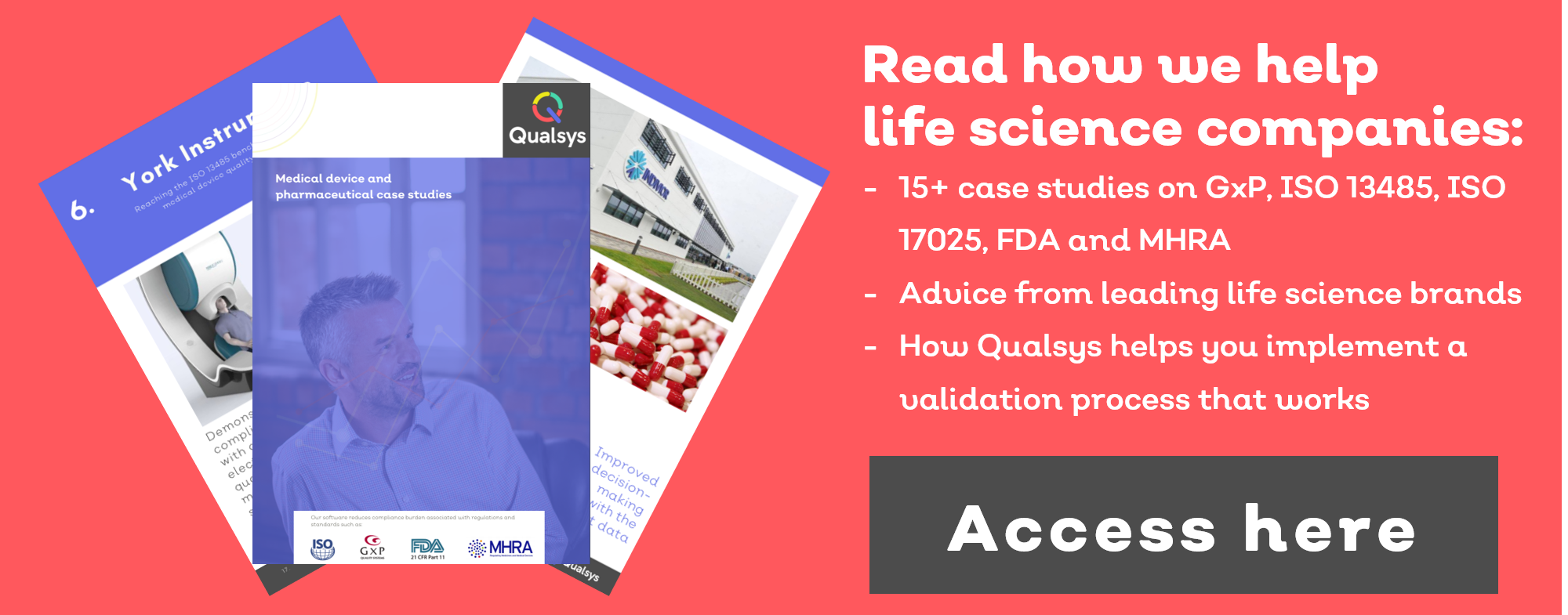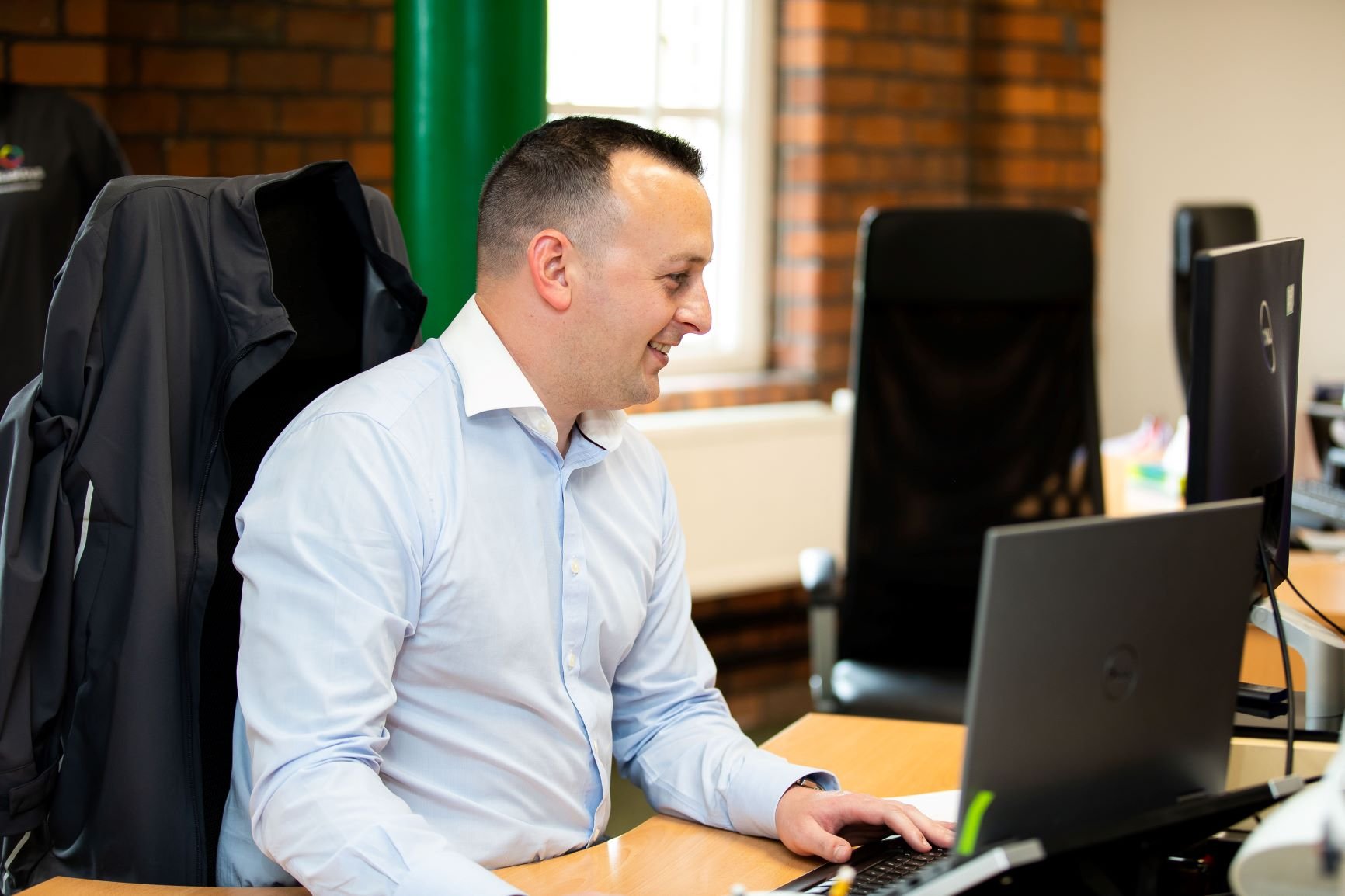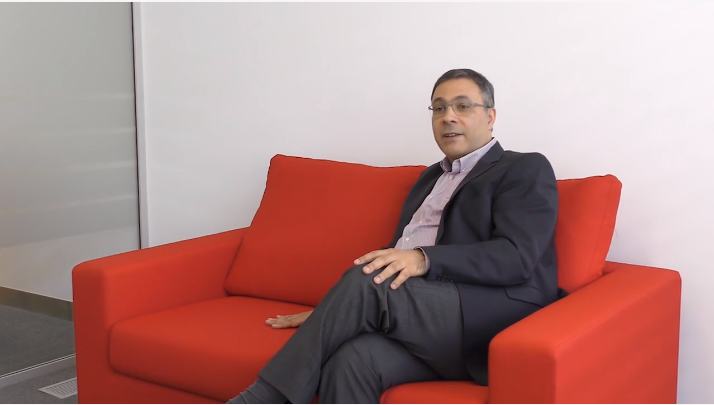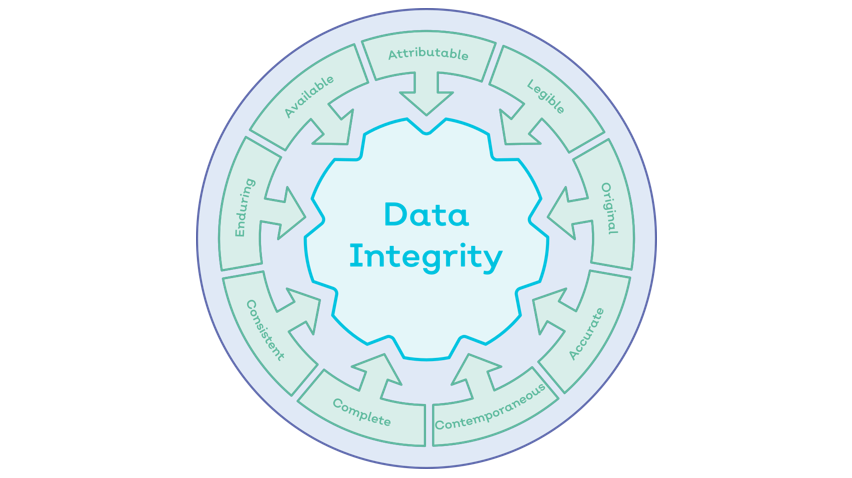Want to contribute to this article?
York Instruments is a specialised developer and manufacturer of magnetoencephalographic brain scanning equipment.
Established in early 2016, York Instruments is nearing the end of the long process of design, development and testing of its new MEGSCAN Class II medical device before going to market.
That means the hurdles of ISO 13485 and FDA accreditation, as well as CE marking for the European markets, are next on the horizon.
We asked Quality Manager Stewart Wilson about his personal approach to quality, submitting his FDA 510(k) pack, why he doesn't prepare for his audits, and how he's used Qualsys's solution to carefully build a compliant quality management system from scratch for the route to market.
Watch the video or read the transcript below.
Qualsys: What does your day-to-day role look like as quality manager of a medical device company?
Stewart: Day-to-day I wear various hats. From a compliance point of view, I'm preparing for our 510(k) submission to the FDA. That involves creating a big pack of documentation informing the FDA that we intend to bring our product to market and asking them to agree that it's a viable product. We're in the process of building that pack. It's quite a lengthy process, especially from a software point of view. FDA software requirements are very stringent so we have to be very detailed in terms of our architecture and the modules.
Overseeing the implementation of an ISO 13485 quality management system is my ongoing target. We've just successfully completed the Stage 1 pre-certification audit and we'll be having our full certification audit on 8 August. The auditor who came in was very impressed by our EQMS system and was very encouraged by what he was seeing. He said at the time, "you are ready for an audit", so it's thanks to EQMS that we were able to demonstrate our controls, our documentation, our process flows. It's all held within EQMS and the auditor liked that.
We also hope to have our equipment CE marked as well for the European market. There are some similarities between a CE pack and a 510(k) pack, but there are differences as well - so we'll have to fine-tune our pack for CE purposes. Then there'll be electrical safety testing for our equipment as well.
It's thanks to EQMS that we were able to demonstrate our controls, our documentation, our process flows. It's all held within EQMS and the auditor liked that.
Qualsys: What does the CE process involve and how does it differ from the FDA 510(k) submission?
Stewart: Basically gathering and creating a technical file. That's what we have to submit for a Class II product. We also have to be audited by whatever third party we nominate for our CE marking process, so it's a two-pronged approach. We have to be ready for our quality management system audit and also to provide the technical pack.
That's where it differs from the FDA process. With the FDA, you submit the 510(k) and they review it and give you clearance, before coming out to audit you. With CE marking the two are done at the same time, so it's a little bit more involved. With the CE process we have to go right down to the drawing level of detail, with the FDA it's more summaries of your product that they're looking for. For a 510(k) submission you're proving your product is substantially equivalent to a product that's already been approved, so you have to build up a case study for that.
 York Instruments is based at the Biocentre of York Science Park
York Instruments is based at the Biocentre of York Science Park
Qualsys: What about your ISO 13485 preparations? Is the 510(k) process similar to that?
Stewart: Not really, because the 510(k) pack is more technical. The 510(k) approach focuses on the product itself, where ISO 13485 is more of a business management point of view and looks at your quality management system.
But the FDA do have an equivalent to that. When we get 510(k) clearance, the FDA will be visiting and auditing us using their own version of ISO 13485, which is 21 CFR Part 820. But we've just heard recently that the FDA will be adopting ISO 13485 and doing away with their own internal system requirements. That's quite exciting for me. When I first sat down with the FDA's regulatory documentation, I thought there was very little difference to ISO 13485. You could see they were trying to align the two, so that seems to be going forward.

York Instruments' medical device is supported by the MEG software
suite - both must meet stringent compliance requirements
Qualsys: With all these audits coming up, do you have any tips or advice for our life science readers about how to prepare for them?
Stewart: Ideally, you shouldn't have to prepare for an audit. You should just be doing your day-to-day business and everything should be in place. Just be sure you've got evidence to provide to the auditors. Working evidence. I spoke to the auditor for our ISO 13485 Stage 1 audit and found that auditors of medical devices like to see live evidence of things happening. If you have a manufacturing process, an auditor will want to see evidence of that process happening on the day of the audit. If you don't have that evidence there, they're likely not to look on you as favourably as they're then having to rely on older information and historical information. So having things live and things happening during the audit is a good place to be.
Be open and honest with the auditor, that's all you can be. And enjoy the experience. I must admit that as I've come up through the industry, I've learned to enjoy audits. It's a two-way conversation. The auditor is learning about us but we're also learning about the auditor. Try not to think, "oh no, we're having an audit!" That's how I treat them.
I've found that auditors of medical devices like to see live evidence of things happening. If you don't have that evidence there, they're likely not to look on you as favourably. So having things live and things happening during the audit is a good place to be.
Qualsys: We hosted a workshop in June about building a culture of quality and getting everyone in a business to contribute to the quality agenda. How do you handle that challenge?
Stewart: Everyone that has any input into the product we're trying to bring to market has a responsibility for quality. So it's part of a quality awareness program that I run for every employee, from CEO down to people working in the workshop. Everyone has the same test and one of the questions is, "who is responsible for quality?" Obviously it's everybody. So everyone is aware of that and is aware of quality assurance requirements.
I run weekly management and project meetings. I put out a quarterly quality assurance newsletter to keep everyone up to date on progress with ISO 13485, quality management system implementation, our EQMS implementation when it was being developed. It keeps everyone up to date with current thoughts and processes.
You shouldn't have to prepare for an audit. You should just be doing your day-to-day business and everything should be in place. Everyone that has any input into the product we're trying to bring to market has a responsibility for quality.
Qualsys: What about your personal development? Are you a member of the CQI?
Stewart: I am a member of the CQI. I just keep up to date with current practices and the CQI is quite a good information portal. I've noticed that Qualsys also provide details on current developments within the quality circle, so that's quite useful for me as well. I keep my eyes and ears open, I use LinkedIn and things like that.

York Instruments's first customer is in the U.S.,
so FDA compliance is one of Stewart's top priorities
Qualsys: If you had to summarise your personal approach to quality to share with others in the industry, what would it be?
Stewart: I try and keep it as positive as I can. Quality assurance shouldn't be a negative exercise but should focus on building on the negatives and turning them into positives. I've added a suggestions box into our EQMS system so any employee can note their questions, queries or suggestions in EQMS, so everybody learns from their experiences. We've made it a very interactive system.
It shouldn't be a burden to use a quality management system, that's the approach I have. And it isn't just a paperwork exercise put in place to satisfy regulatory authorities - it's there to be used, to help the company boost efficiency and profitability and train employees. It's an all-encompassing part of a business strategy.

After 2 years of development, MEGSCAN will be completed this year
Qualsys: What were you using before you found Qualsys? How did your electronic quality management project begin?
Stewart: Initially there was no quality management system. I was brought in to build one from scratch. I had to identify which business activity we wanted to capture and generate the quality documentation to support the activities of the various functions in the company.
At the time, it was very much a paperwork exercise and I was using what was available at the time - creating documentation on Word for instance and getting them signed and filed away. As I was doing this, it was apparent I was going to need an electronic management system, so myself and our software lead Nat Blundell began to review potential software packages online.
Our software team all operate under Linux, and there weren't many electronic quality systems that were dual-platform. Most are just Windows-based. We found Qualsys and saw that EQMS was compatible, multi-platform, and I particularly liked the flexibility of the system. We chose Document and Issue Manager.
I was able to do away with the paperwork exercise using EQMS, and it's gone from strength to strength. We're now storing our drawings and all our controlled documentation in EQMS and it's working out really well.
It shouldn't be a burden to use a quality management system. And it isn't just a paperwork exercise put in place to satisfy regulatory authorities - it's there to be used, to help the company boost efficiency and profitability and train employees. It's an all-encompassing part of a business strategy.
Qualsys: How do you use Issue Manager?
Stewart: Issue Manager is a really flexible platform and I really enjoyed setting it up. Our engineering change requests come through there, our non-conformances and corrective actions come through, we do concession requests through Issue Manager - so there's a whole host of aspects of quality control in the module. And lots of different forms, so people just select what they need, fill it out, and in it goes into the system and gets acted upon accordingly. It's nice and tightly controlled. Very auditable.

Automated workflows ensure nothing is missed
Qualsys: What about Document Manager?
Stewart: I have two sections: project documentation and quality management system documentation. So ISO 13485 procedures, process flows, forms, quality system records like calibration certificates, audit reports and that type of thing sit in the quality system side. Then on the project side, all our drawings sit in there - and when we have our first test reports from our first customer, they'll get logged in there as well.
Issue Manager is a really flexible platform and I really enjoyed setting it up. It's nice and tightly controlled. Very auditable.
Qualsys: How did you implement your life science electronic quality management system? How was it set up?
Stewart: From the onset, we were dealing with Dave Beard [Service Implementation Manager], who was excellent in his approach, and at all times it was always, "if you have any questions, just drop me an email or give me a phone". We went to a couple of training sessions once we'd identified the modules we wanted. We aren't a big company and we only set up two modules, we don't have multiple departments, so it was a fairly straightforward exercise. It was quite an enjoyable experience.
At the end of the implementation we went through a validation exercise to satisfy our medical device requirements. We went through some tests and took some screenshots, and that was our evidence that we were being diligent and the system was robust.

Dave Beard was Stewart's dedicated Service Implementation Manager, who helped York Instruments implement their new system and train users
Qualsys: What advice would you share with others looking to set up an electronic quality solution?
Stewart: I've found that previous systems I've adopted have been overly complex and just never seem quite tailored to your needs. Other systems have been overly complex and never seem quite tailored to your needs.
Whereas with Qualsys's system, I kept things nice and simple. That is the key. Make it as simple as you can to begin, make sure you're happy with the basic system you have in place, and then work it and use it to its full advantage. If you want to bring in extra things later on, do so. That's my approach and it's worked really well for us.

York Instruments' first medical device will
provide non-invasive biomagnetic scanning
Qualsys: Has EQMS increased your speed to market?
Stewart: Yes, in that once drawings are released from our design teams, they go into EQMS. They know once they're in EQMS that the drawings are tightly controlled - if they want to deviate, they have to raise concessions, if they want to change anything, they have to go through an engineering change notice. So it's helped bring the product to maturity stage and advance the project quicker than if we didn't have those controls in place.
Qualsys: Has the solution saved you time?
Stewart: I have noticed that the turnaround time for approving engineering change requests has dropped remarkably. My target used to be within 15 days, now it's dropped to 10 days because people can react more quickly. There are efficiencies accrued there.
Qualsys: What about audit readiness?
Stewart: I noticed in the system that there's an audit trail history which you can click on to track everything that's happened with a certain document, say. With my approach of always being ready just in case someone does come knocking on your door - which they are able to do in the medical device industry - the system should always be in an auditable state. So yes, the system does lend itself to being fully navigable and it's easy to extract information for an auditor - as was proved when the auditor came in for our Stage 1 assessment. I was navigating through and demonstrating the various functions of the system and he was fully on-board with it. He said, "I'm looking forward to coming back and interrogating this system further".

Controlled documentation and standardised processes
are crucial for bringing MEGSCAN to market
Qualsys: How do you think our solution will help you in the future?
Stewart: We're hoping to build 10-20 systems a year once we've gone to market. It's not high volume but these are complex pieces of equipment. So the quality management system we've put in place should support that low-volume manufacturing. We'll be capturing all the manufacturing processes and requirements and logging test requirements and capturing it all in one system. It'll grow as the company grows. Future projects? Yes, we are a design and development company so there are future projects just waiting to go, but this is our first main project we're bringing to market - to utilise the sensor technology.

What to do next
Putting together a 510(k) like Stewart? Read our Senior Business Development Manager Alex Swan's five top tips here.
Building an ISO 13485 quality management system? Download our free toolkit here. See how our software can be used to build a 13485 system with our free datasheet here.
Or access our medical device case study document and read how our software has helped life science companies hit their FDA targets, 13485 requirements, MHRA goals and more:









Share your thoughts on this article